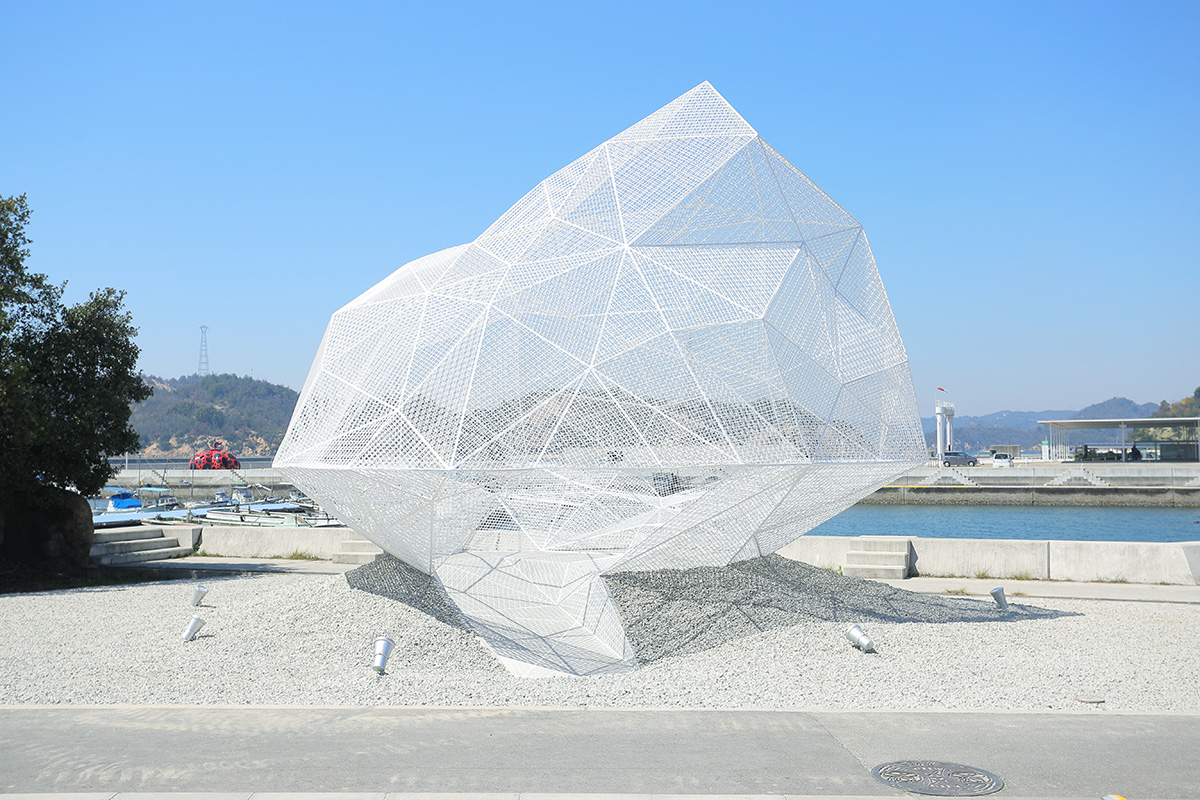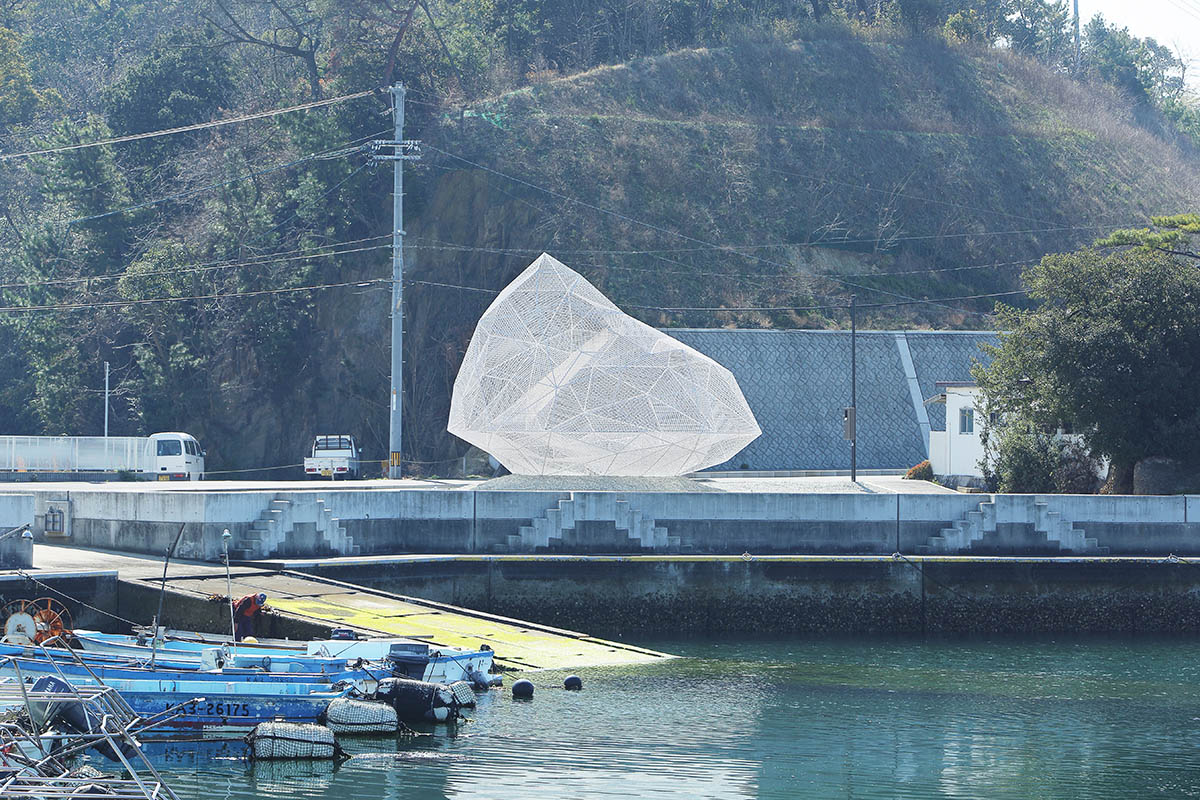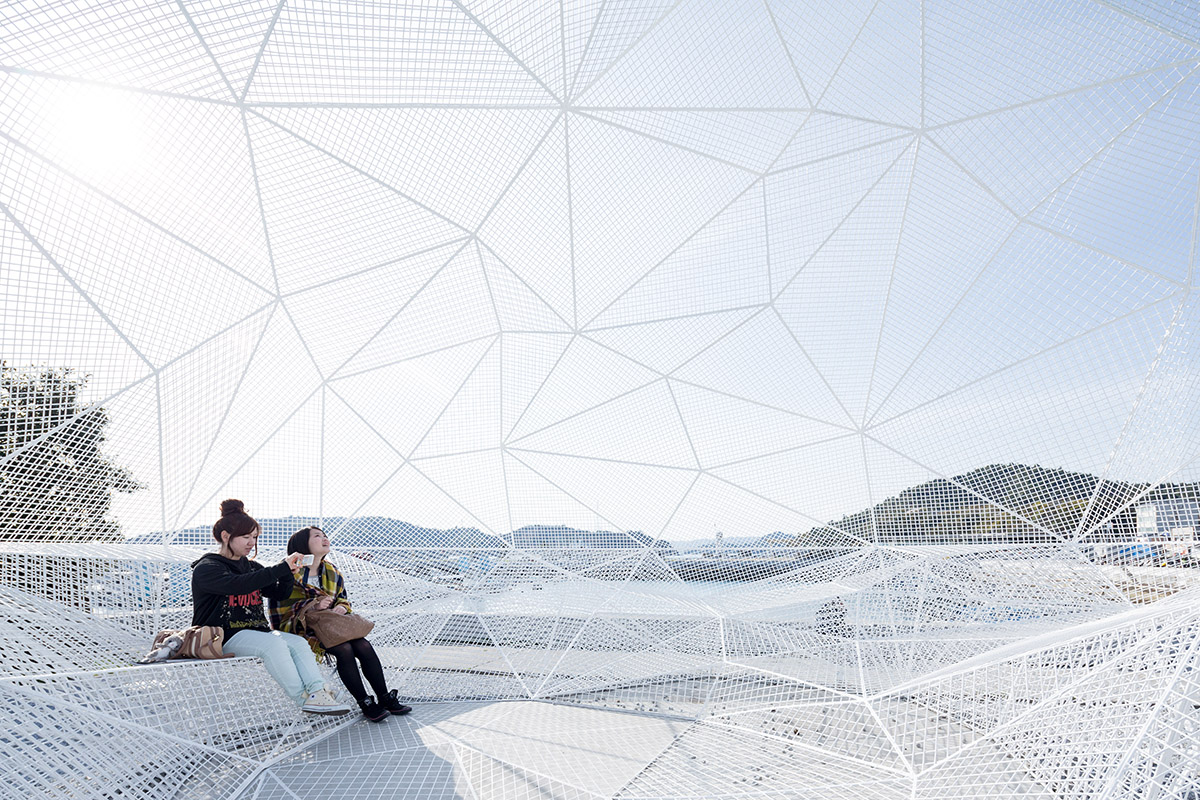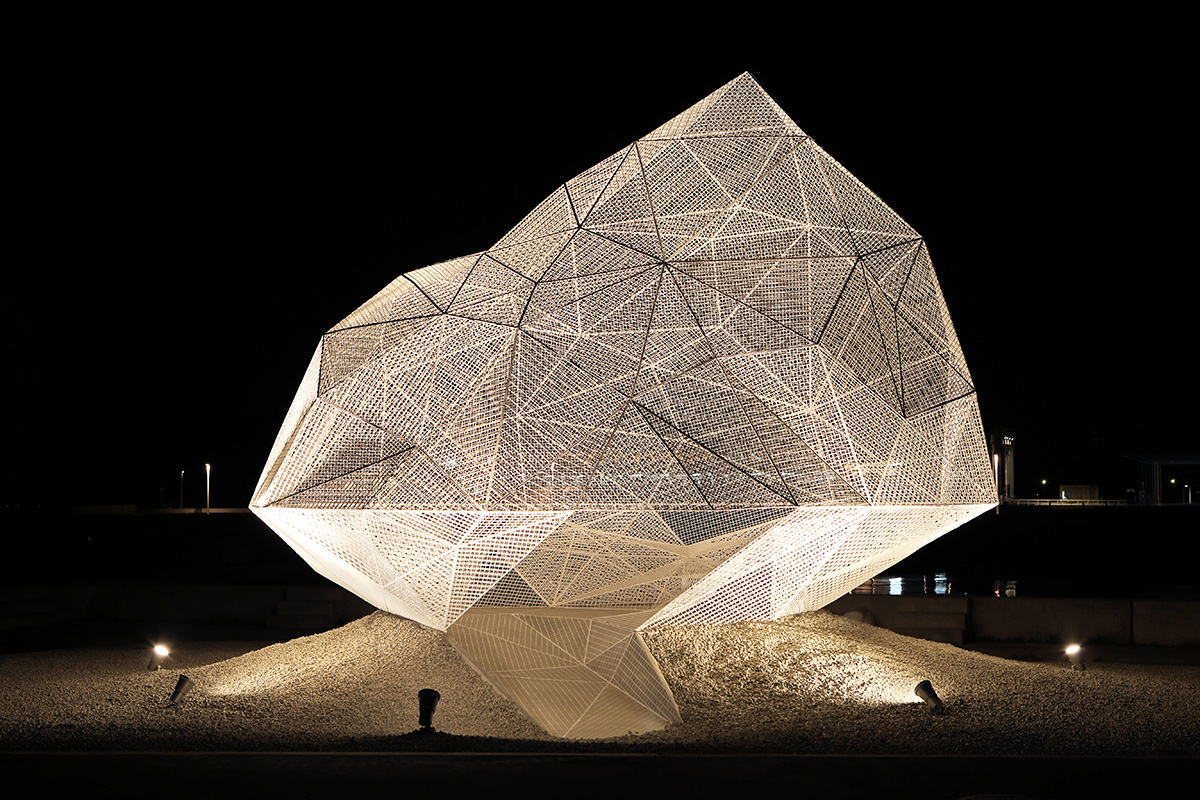Submitted by WA Contents
Sou Fujimoto’s Naoshima Pavilion explores different spatial experiences with its irregular topography
Japan Architecture News - Aug 10, 2016 - 14:56 32076 views

It is not an empty white box to watch, roll down, or investigate different innovative materials over its blurred structure, especially in the daytime. Sou Fujimoto's polyhedral Naoshima Pavilion is located on the Kagawa shoreline in Japan with its obscure silhouette.
On the pool side of Naoshima, renowned as an island of art and architecture, Fujimoto designed a small public space where a variety of people including local residents and tourists, can relax, which was created as part of the 2016 Setouchi Triennale.
This irregularly-formed structure functions as a community space and a new landmark. The town of Naoshima consists of 28 islands and architect decided to create one more, the 29th island. The space is softly enveloped in a white metal mesh structure. ''Outside, it resembles an irregular stone, floating like an island on the ground,'' says the architect, Sou Fujimoto.

Image © Jin Fukuda
Looking from the inside, the space also has an irregular topography, allowing people to find a place where they feel comfortable and sit down. The interior space, cloaked in the translucent mesh, creates the sensation of a soft white spatial membrane, only allowing the wind, sounds, and smells of the port in.

Image © Iwan Baan
It is a kind of an inverted island and a new form of space that is different from rigid architectural spaces made with conventional floors, walls, and ceilings. While our sense of vision is diminished, our sense of hearing, touch and smell are enhanced, allowing us to experience the place with all of our senses. Though small, this is an ambitious work designed to provide a new architectural experience.

Image © Iwan Baan
Tokyo-based French architect and filmmaker Vincent Hecht filmed the opening of Naoshima Pavilion in 2015 showing that how people are interacting with the pavilion in the real by touching, seating, feeling and using it as a distinctive space.

Image © Jin Fukuda
The structure looks like a bubble floating in the air and is perceived as a naive white sculpture in the domestic landscape- even if not seem realistic -still looking a rendering image. But, you can test it. Vincent Hecht experiences Fujimoto's structure throughout the day proving that how it is shaped or shining at night.

Image © Jin Fukuda
Top image © Jin Fukuda
> via Sou Fujimoto